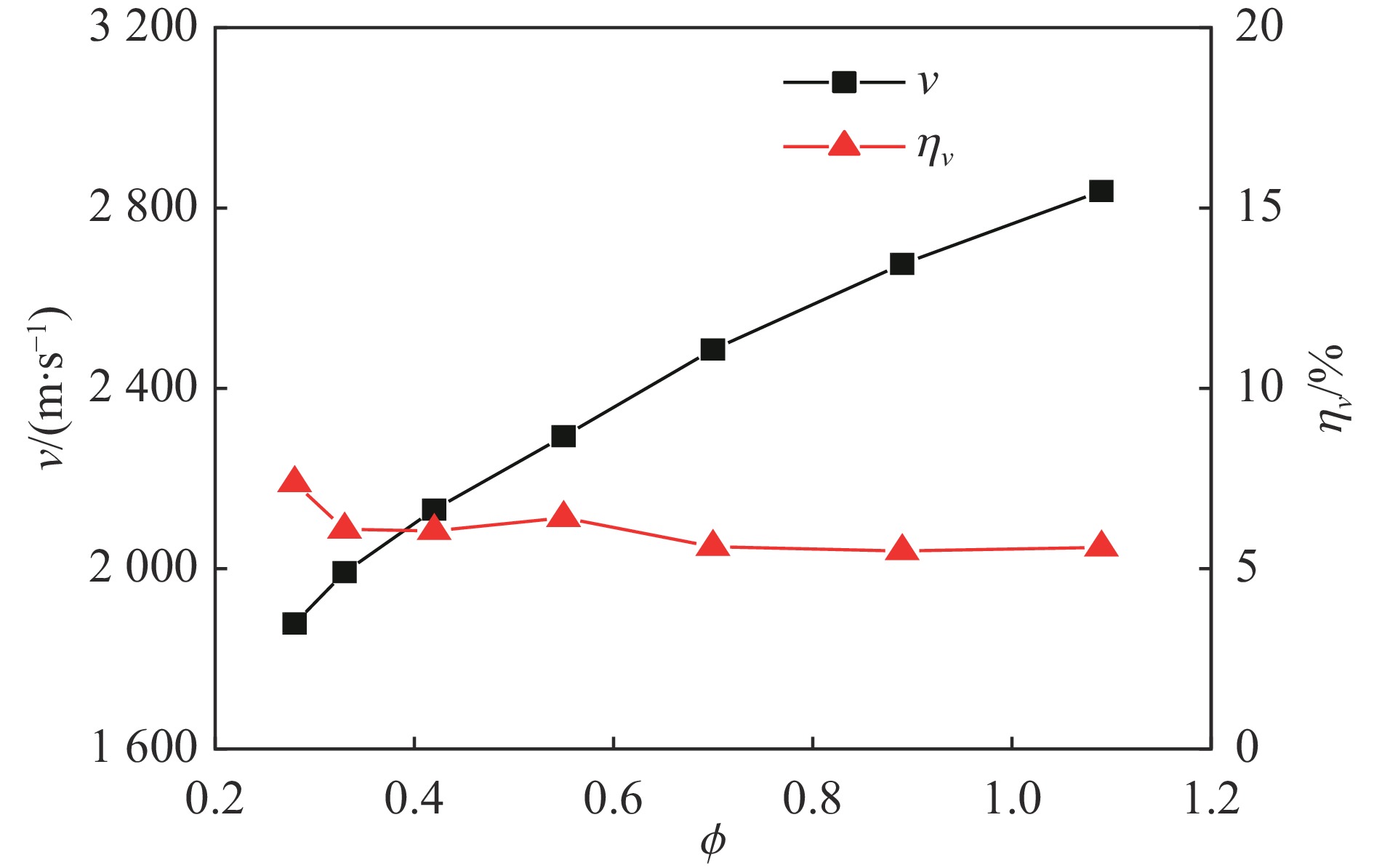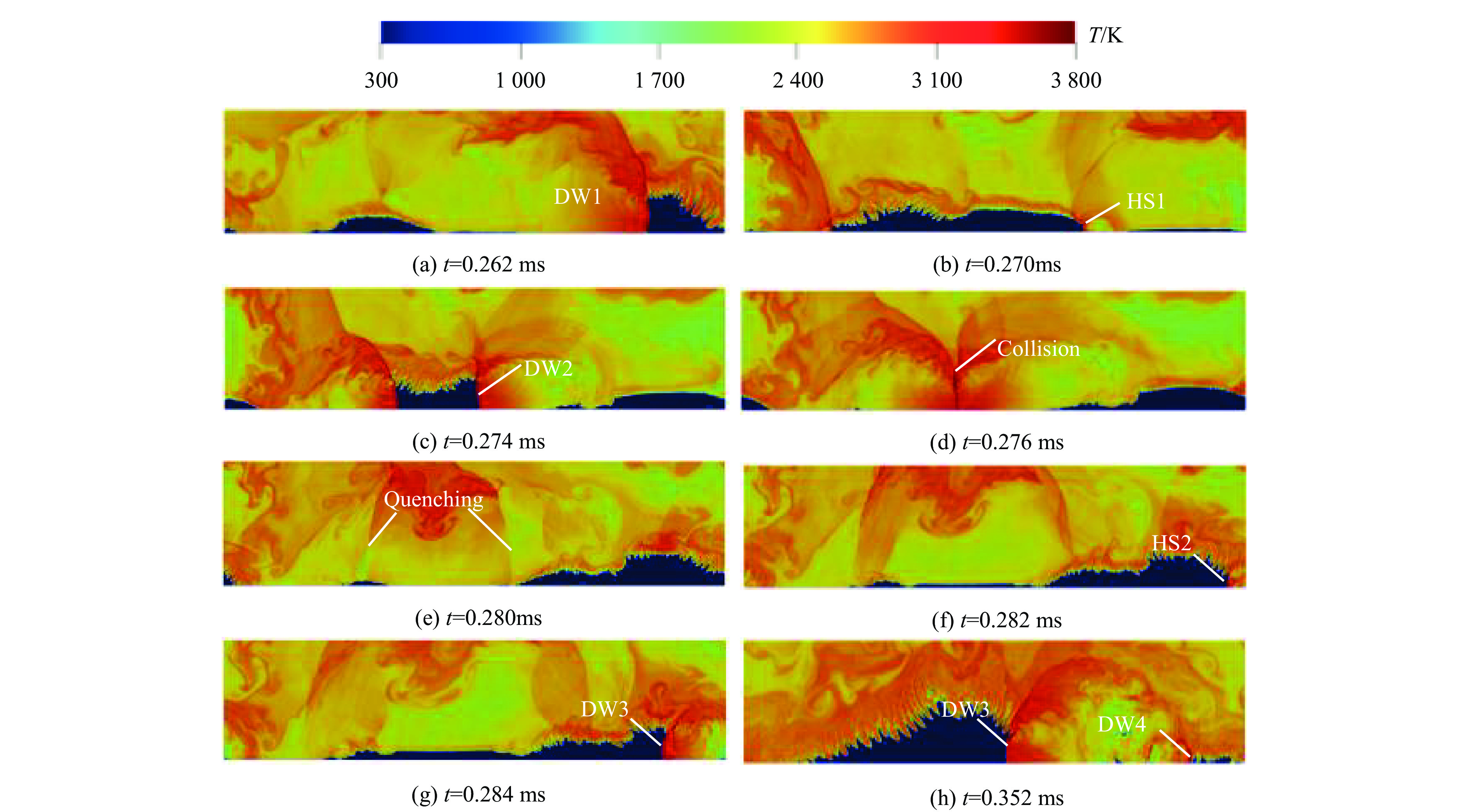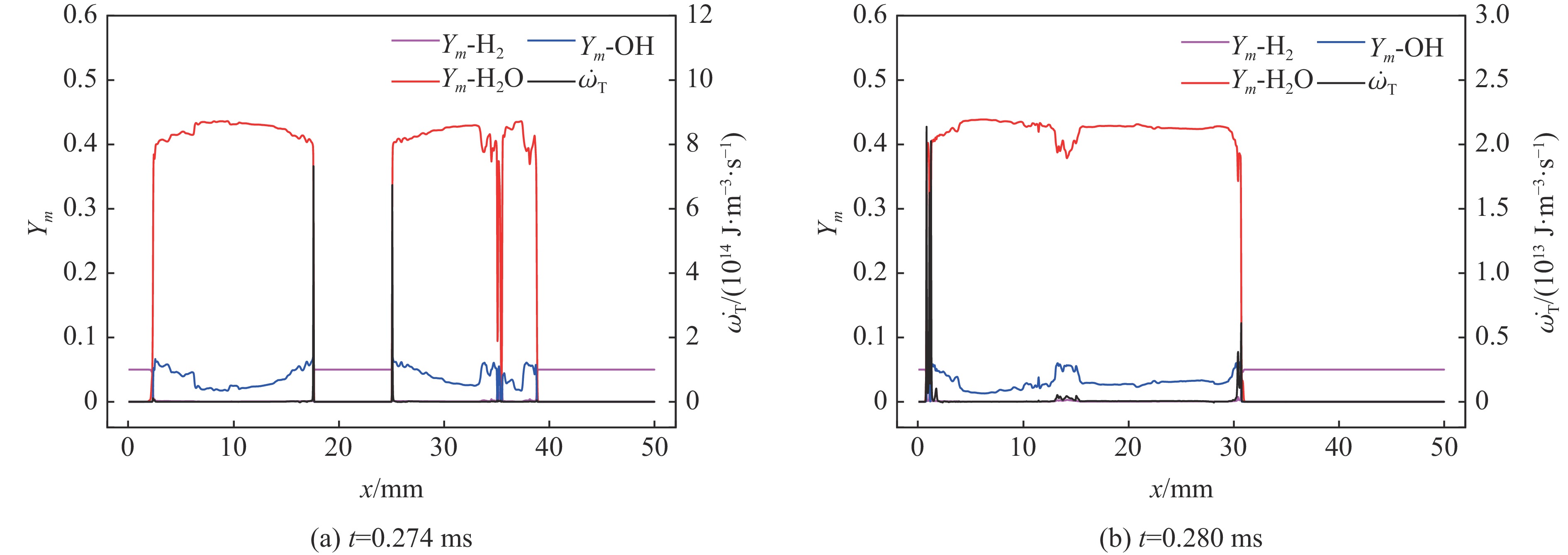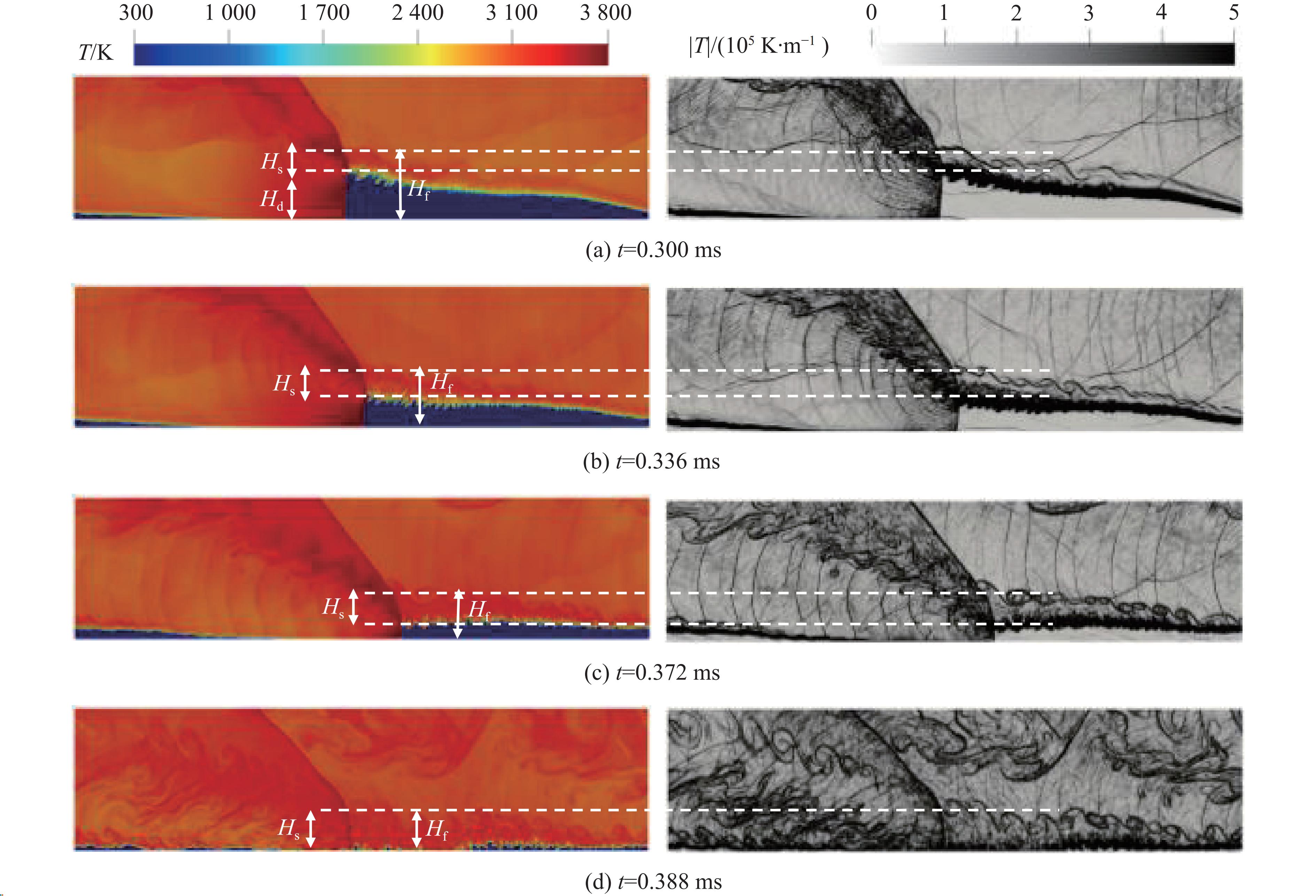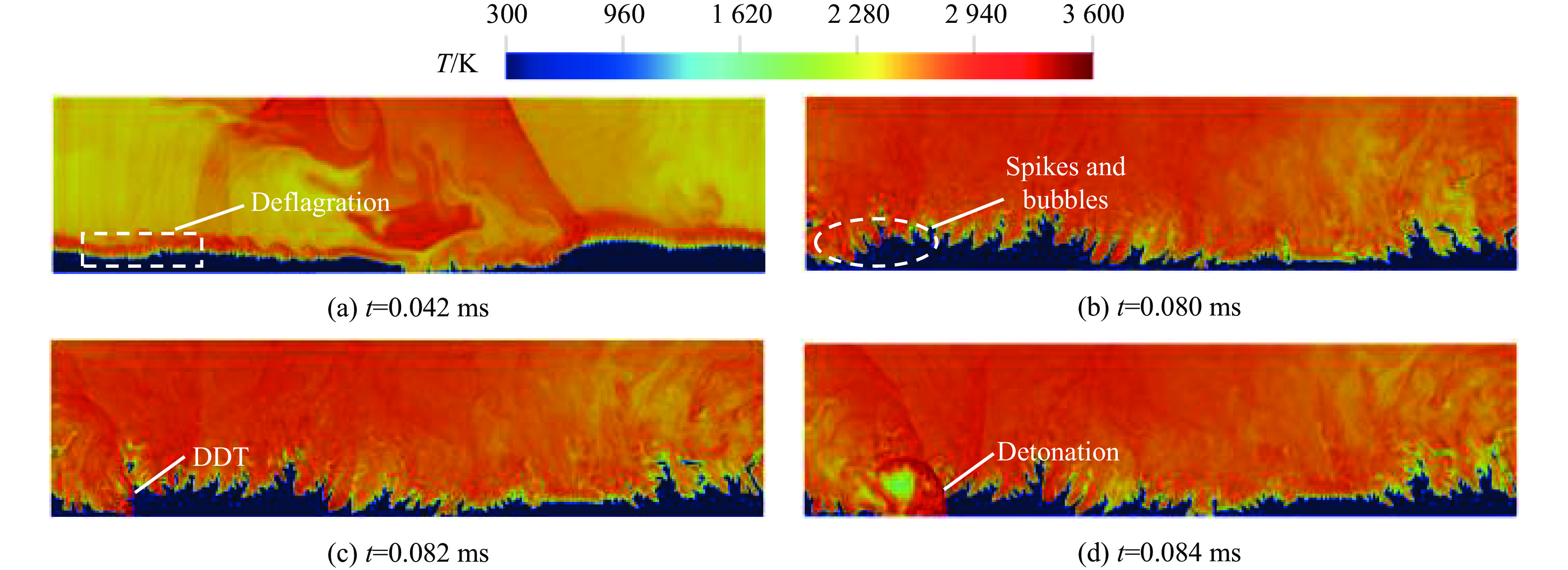| [1] |
LIU Y, ZHOU W J, YANG Y J, et al. Numerical study on the instabilities in H 2-air rotating detonation engines [J]. Physics of Fluids, 2018, 30(4): 046106. DOI: 10.1063/1.5024867. |
| [2] |
MA J Z, LUAN M Y, XIA Z J, et al. Recent progress, development trends, and consideration of continuous detonation engines [J]. AIAA Journal, 2020, 58(12): 4976–5035. DOI: 10.2514/1.J058157. |
| [3] |
VERREAULT J, HIGGINS A J. Initiation of detonation by conical projectiles [J]. Proceedings of the Combustion Institute, 2011, 33(2): 2311–2318. DOI: 10.1016/j.proci.2010.07.086. |
| [4] |
FAN W, YAN C J, HUANG X Q, et al. Experimental investigation on two-phase pulse detonation engine [J]. Combustion and Flame, 2003, 133(4): 441–450. DOI: 10.1016/S0010-2180(03)00043-9. |
| [5] |
LU F K, BRAUN E M. Rotating detonation wave propulsion: experimental challenges, modeling, and engine concepts [J]. Journal of Propulsion and Power, 2014, 30(5): 1125–1142. DOI: 10.2514/1.B34802. |
| [6] |
PENG H Y, LIU W D, LIU S J, et al. Hydrogen-air, ethylene-air, and methane-air continuous rotating detonation in the hollow chamber [J]. Energy, 2020, 211: 118598. DOI: 10.1016/j.energy.2020.118598. |
| [7] |
BOHON M D, BLUEMNER R, PASCHEREIT C O, et al. High-speed imaging of wave modes in an RDC [J]. Experimental Thermal and Fluid Science, 2019, 102: 28–37. DOI: 10.1016/j.expthermflusci.2018.10.031. |
| [8] |
WU M L, ZHENG Q, XU H, et al. The influence of hydrogen proportion on the propagation characteristics of hydrogen-kerosene-air rotating detonation waves [J]. Acta Armamentarii, 2022, 43(1): 86–97. DOI: 10.3969/j.issn.1000-1093.2022.01.010. |
| [9] |
ZHANG Y Z, CHENG M, RONG G Y, et al. Numerical investigation on formation mechanism of low-frequency detonation instability [J]. Explosion and Shock Waves, 2021, 41(9): 092101. DOI: 10.11883/bzycj-2020-0239. |
| [10] |
YANG F, JIANG C X, WANG Y H, et al. Influence of kerosene droplet diameters on the flow field of a two-phase rotating detonation engine [J]. Explosion and Shock Waves, 2023, 43(2): 022101. DOI: 10.11883/bzycj-2022-0068. |
| [11] |
DING C W, WENG C S, WU Y W, et al. Combustion characteristics of rotating detonation based on liquid hydrocarbon fuel [J]. Explosion and Shock Waves, 2022, 42(2): 022101. DOI: 10.11883/bzycj-2021-0065. |
| [12] |
张树杰, 张立锋, 姚松柏, 等. 当量比对连续旋转爆轰发动机的影响研究 [J]. 兵工学报, 2017, 38(S1): 1–7.
ZHANG S J, ZHANG L F, YAO S B, et al. Numerical investigation on rotating detonation engine with varying equivalence ratios [J]. Acta Armamentarii, 2017, 38(S1): 1–7.
|
| [13] |
MENG Q Y, ZHAO N B, ZHENG H T, et al. Numerical study on the two-wave transition process in rotating detonation combustor under separate injection condition [J]. Journal of Aerospace Power, 2019, 34(1): 51–62. DOI: 10.13224/j.cnki.jasp.2019.01.007. |
| [14] |
JOURDAINE N, TSUBOI N, OZAWA K, et al. Three-dimensional numerical thrust performance analysis of hydrogen fuel mixture rotating detonation engine with aerospike nozzle [J]. Proceedings of the Combustion Institute, 2019, 37(3): 3443–3451. DOI: 10.1016/j.proci.2018.09.024. |
| [15] |
FAN L Z, SHI Q, ZHI Y, et al. Experimental and numerical study on multi-wave modes of H 2/O 2 rotating detonation combustor [J]. International Journal of Hydrogen Energy, 2022, 47(26): 13121–13133. DOI: 10.1016/j.ijhydene.2022.02.048. |
| [16] |
ANAND V, ST. GEORGE A, DRISCOLL R, et al. Characterization of instabilities in a Rotating Detonation Combustor [J]. International Journal of Hydrogen Energy, 2015, 40(46): 16649–16659. DOI: 10.1016/j.ijhydene.2015.09.046. |
| [17] |
HISHIDA M, FUJIWARA T, WOLANSKI P. Fundamentals of rotating detonations [J]. Shock Waves, 2009, 19(1): 1–10. DOI: 10.1007/s00193-008-0178-2. |
| [18] |
LI Q, LIU P X, ZHANG H X. Further investigations on the interface instability between fresh injections and burnt products in 2-D rotating detonation [J]. Computers & Fluids, 2018, 170: 261–272. DOI: 10.1016/j.compfluid.2018.05.005. |
| [19] |
LIU P X, LI Q, HUANG Z F, et al. Interpretation of wake instability at slip line in rotating detonation [J]. International Journal of Computational Fluid Dynamics, 2018, 32(8/9): 379–394. DOI: 10.1080/10618562.2018.1533634. |
| [20] |
ZHAO M J, LI J M, TEO C J, et al. Effects of variable total pressures on instability and extinction of rotating detonation combustion [J]. Flow, Turbulence and Combustion, 2020, 104(1): 261–290. DOI: 10.1007/s10494-019-00050-y. |
| [21] |
STECHMANN D P. Experimental study of high-pressure rotating detonation combustion in rocket environments [D]. West Lafayette: Purdue University, 2017.
|
| [22] |
WANG Y H, WANG J P. Coexistence of detonation with deflagration in rotating detonation engines [J]. International Journal of Hydrogen Energy, 2016, 41(32): 14302–14309. DOI: 10.1016/j.ijhydene.2016.06.026. |
| [23] |
BYKOVSKII F A, ZHDAN S A, VEDERNIKOV E F, et al. Continuous detonation of a hydrogen-oxygen gas mixture in a 100-mm plane-radial combustor with exhaustion toward the periphery [J]. Shock Waves, 2020, 30(3): 235–243. DOI: 10.1007/s00193-019-00919-x. |
| [24] |
BYKOVSKII F A, ZHDAN S A, VEDERNIKOV E F, et al. Detonation combustion of a hydrogen–oxygen mixture in a plane–radial combustor with exhaustion toward the center [J]. Combustion, Explosion, and Shock Waves, 2016, 52(4): 446–456. DOI: 10.1134/s0010508216040080. |
| [25] |
KELLER P K, POLANKA M D, SCHAUER F R, et al. Low mass-flow operation of small-scale rotating detonation engine [J]. Applied Thermal Engineering, 2024, 241: 122352. DOI: 10.1016/j.applthermaleng.2024.122352. |
| [26] |
HUANG Z W, ZHAO M J, XU Y, et al. Eulerian-Lagrangian modelling of detonative combustion in two-phase gas-droplet mixtures with OpenFOAM: validations and verifications [J]. Fuel, 2021, 286: 119402. DOI: 10.1016/j.fuel.2020.119402. |
| [27] |
ZHANG H W, ZHAO M J, HUANG Z W. Large eddy simulation of turbulent supersonic hydrogen flames with OpenFOAM [J]. Fuel, 2020, 282: 118812. DOI: 10.1016/j.fuel.2020.118812. |
| [28] |
CONAIRE M Ó, CURRAN H J, SIMMIE J M, et al. A comprehensive modeling study of hydrogen oxidation [J]. International Journal of Chemical Kinetics, 2004, 36(11): 603–622. DOI: 10.1002/kin.20036. |
| [29] |
LIU X Y, LUAN M Y, CHEN Y L, et al. Flow-field analysis and pressure gain estimation of a rotating detonation engine with banded distribution of reactants [J]. International Journal of Hydrogen Energy, 2020, 45(38): 19976–19988. DOI: 10.1016/j.ijhydene.2020.05.102. |
| [30] |
BENGOECHEA S, REISS J, LEMKE M, et al. Adjoint-based optimisation of detonation initiation by a focusing shock wave [J]. Shock Waves, 2021, 31(7): 789–805. DOI: 10.1007/s00193-020-00973-w. |
| [31] |
RUDY W, ZBIKOWSKI M, TEODORCZYK A. Detonations in hydrogen-methane-air mixtures in semi confined flat channels [J]. Energy, 2016, 116: 1479–1483. DOI: 10.1016/j.energy.2016.06.001. |
| [32] |
RUDY W, KUZNETSOV M, POROWSKI R, et al. Critical conditions of hydrogen-air detonation in partially confined geometry [J]. Proceedings of the Combustion Institute, 2013, 34(2): 1965–1972. DOI: 10.1016/j.proci.2012.07.019. |
| [33] |
WANG F, WENG C S, ZHANG H W. Semi-confined layered kerosene/air two-phase detonations bounded by nitrogen gas [J]. Combustion and Flame, 2023, 258: 113104. DOI: 10.1016/j.combustflame.2023.113104. |
| [34] |
ZHANG S, YAO S, LUAN M, et al. Effects of injection conditions on the stability of rotating detonation waves [J]. Shock Waves, 2018, 28(5): 1079–1087. DOI: 10.1007/s00193-018-0854-9. |
| [35] |
GOODWIN G B, ORAN E S. Premixed flame stability and transition to detonation in a supersonic combustor [J]. Combustion and Flame, 2018, 197: 145–160. DOI: 10.1016/j.combustflame.2018.07.008. |
| [36] |
MENG Q Y, ZHAO M J, ZHENG H T, et al. Eulerian-Lagrangian modelling of rotating detonative combustion in partially pre-vaporized n-heptane sprays with hydrogen addition [J]. Fuel, 2021, 290: 119808. DOI: 10.1016/j.fuel.2020.119808. |
| [37] |
GEORGE A C S, DRISCOLL R B, ANAND V, et al. Starting transients and detonation onset behavior in a rotating detonation combustor [C]//Proceedings of the 54th AIAA Aerospace Sciences Meeting. San Diego: AIAA, 2016. DOI: 10.2514/6.2016-0126. |










 DownLoad:
DownLoad:

